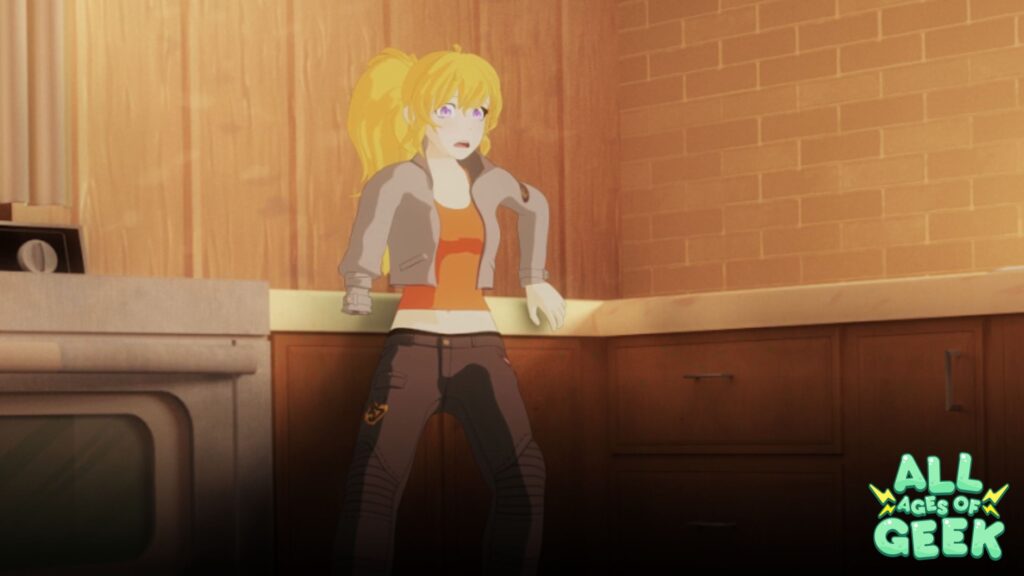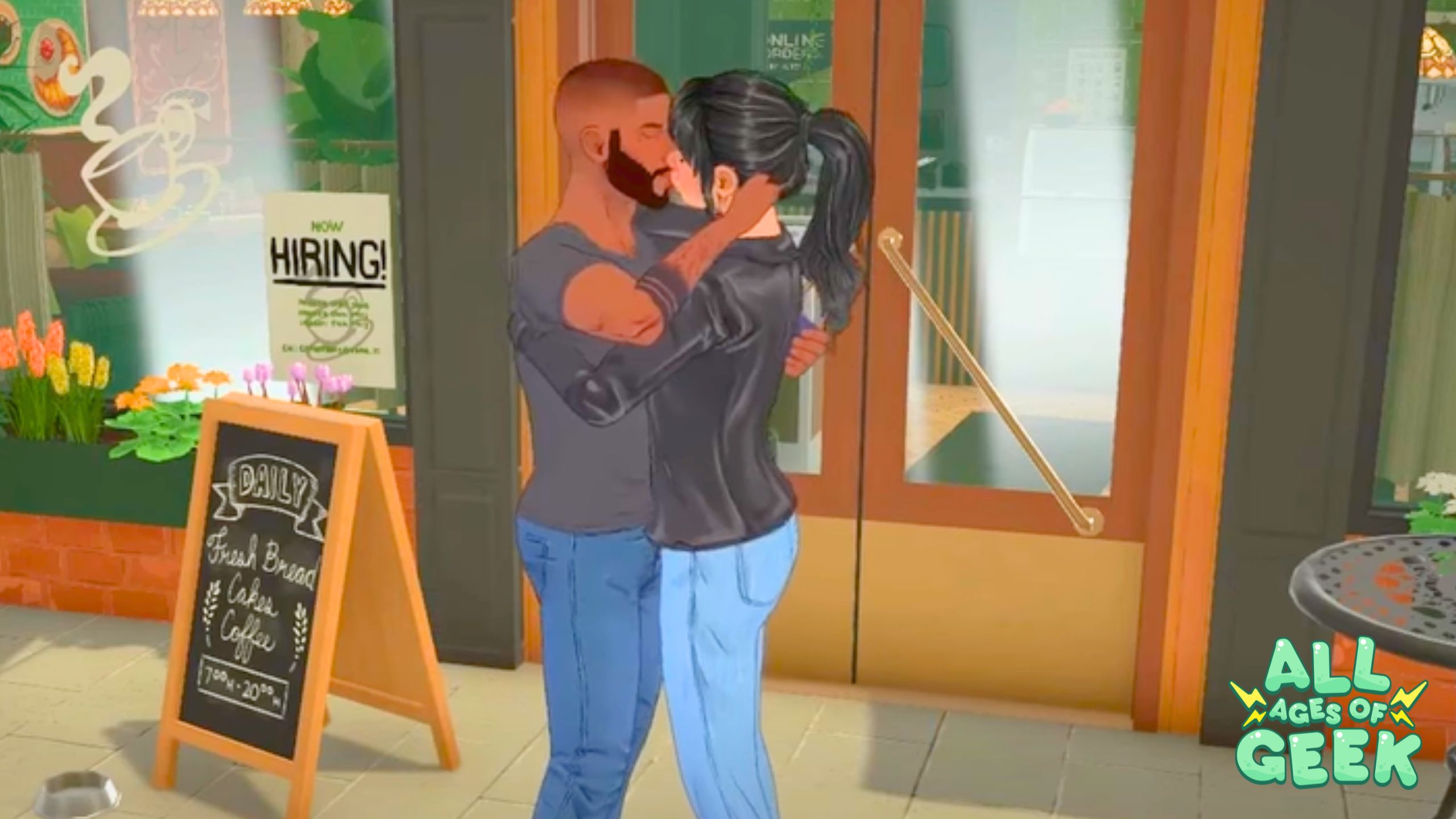Disclaimer: These articles contain in-depth discussion on the topics of mental health/illness and topics such as abuse.
The writer is also not a trained nor certified therapist. However, they have been writing for twenty years with a heavy focus on correct, realistic portrayals of mental health. They have studied PTSD and C-PTSD in depth and speak from personal experience. Of course, they only speak from one point of view as PTSD symptoms and experiences are unique to each and every person. This is done from a clinical viewpoint, using sourced academic literature.
More technical jargon (namely the actual list of symptoms) will be given in more everyday language when and where possible.
—
The writing of Yang’s PTSD from Volume 4 onward has been a point of major contention among many fans, especially whom don’t have a good grasp of the psychology behind it. It can be difficult to tell if some things do apply to Yang or not. However, she does show enough symptoms overall that match up with the official list to constitute a diagnosis.
Before starting, there is one term I would like to address that will probably come up a fair bit and that is the word “trigger.” Online, it’s used as “Oh that triggered me” when you see something that’s mildly upsetting.
The APA Dictionary online simply defines triggers as “a stimulus that elicits a reaction.”
In the context of this article and series, however, the use will be far more specific. Whenever it’s used, it will specifically mean “an external reminder of the trauma that generally causes a negative reaction.”
The first set of criteria listed is under fairly straightforward and don’t require too much explanation.
A. Exposure to trauma in one or more ways:
1. Experiencing the trauma directly
2. Witnessing the events as they occur to somebody else
3. Learning that the events happened to somebody that one is close with. In cases of death, it must have been violent or accidental.
4. Experiencing extreme, repeated details of traumatic events, ie first responders collecting human remains, officers learning the details of abuse.
Considering this…
[Image description: Whole scene is crimson and black due to Adam using Moonslice. He’s off to the side while Yang is up in the air, her arm detached and floating in the air. Blake is on the ground. All figures are in shadow aside from the red highlights on Adam’s outfit and his hair, Yang’s bright yellow hair and her Ember Celica.]
…she obviously experienced the trauma herself.
There’s also a potential argument for A2 as she did see Adam attacking Blake, albeit it very briefly.
She tends to focus mainly on losing her arm (rightly so) but she’s generally afraid of Adam until the end of V6. Seeing him attack Blake could have had a hand on this. Admittedly this is more speculation on my part than anything; it just could be a contributing factor to her fear of Adam.
[Image description: Blake laying on the ground with Adam standing over her, Wilt’s blade stabbed into her near her hip]
A3 and A4 have no bearing on the trauma Yang experienced, so we can move onto the next set of criteria.
B. Presence of one (or more) of intrusive thought patterns related to the trauma starting after the event:
1. Recurring, distressing memories of the events
2. Recurring, distressing dreams with content related to the trauma
3. Dissociative reactions (ie flashbacks) where the trauma feels like it’s happening again
4. Intense or prolonged mental distress at anything that resembles part of the traumatic event
5. Noticeable physiological reactions to something resembling part of the trauma
Personally, I’d argue that Yang shows four of the symptoms, those being B2-B5. l’ll admit I haven’t done a full canon review recently, so I may be missing points for B1. There are some implications of it, but I’ll touch on those when I get to B3. The points seem very similar, but there is nuance that separates them from each other.
Getting into B2, we have a very obvious example of that in V4 C4 “Family.”
[Image description: Yang has a nightmare about the events of the Fall, centering around Adam. Adam is on the left, looming over Yang on the right who has a terrified expression on her face]
The context of this particular vision of Adam is after she receives the prosthetic and is struggling with the choice of whether or not to start working with it. The thought of it alone is enough to trigger pretty severe nightmare in her about losing it.
Admittedly, there is difficulty in establishing the fact that the nightmares are “recurring.” We see only this one isolated incident which does get at the core issue of why some people may have issues with PTSD diagnosis for Yang on some criteria. PTSD is about a recurring pattern of behaviors. We see only isolated incidents of these things which makes some of these very hard to make a definitive answer on. However, in my own research and writing experience, I’ve found that if one nightmare is caused by a trigger, it’s pretty common for them to be recurring.
Moving on, B3 is straight forward except for one word in there: dissociation. This is one of those pieces of technical jargon that can’t be swapped out for everyday speech as it addresses very specific phenomena. At its base, dissociation is a mental break, in reality, usually to avoid negative thoughts. Everyone experiences it lightly in their lifetimes whether they know it or not. Whenever you daydream, you’re dissociating. If you get in your car and go from your house to work and don’t remember the drive, that’s another form of it.
And that exactly what flashbacks are. It’s a very specific type of dissociation, often brought on by some sort of external trigger.
We do see one very good example of this in V4 C “Of Runaways and Stowaways.” She drops the glass and it triggers her into a quick flashback of Adam.
[Image description: Yang in the kitchen, leaning up against the counter. She’s off center to the left and in a small perspective. She has a panicked look and is gripping the counter. A shattered glass sits on the floor slightly off center and more in the foreground.]
Let me quickly circle back to Criteria B1 and the “recurring” part. We do see the glass as an isolated incident as far as canon goes which makes it difficult to pull on anything else to establish that. However, these sorts of things are rarely (if ever) simple, isolated incidents.
Going back to the stereotype of veterans with (say) fireworks as a trigger, it wouldn’t just be one and done. They wouldn’t hear it once on New Year’s Even and never react again; it’d be every time they heard them. (This isn’t taking into the effects of specific types of therapy and actively working on it.)
The same would be true for Yang.
One thing to note with flashbacks is that they occur on a spectrum and can take many forms. The stereotype of the veteran is the most extreme example. Flashbacks can be auditory or the person reexperiencing certain physical sensations. I’m sure there are more types that I’m not aware of too. The main point is that the person doesn’t have to be fully seeing the events to feel like they’re recurring.
Let me just finish off this part by touching on the nuance between B1 and B3. Both deal with memories and how they intrude on a person’s everyday life. B1 is much more generalised than B3. B3 is about a very specific event, usually caused by a trigger.
B1, however, is just generalised thoughts and it happens to everybody at times. Everyone has small moments of trauma in their lives where they might have been humiliated in front of others, bullied, or something similar. It’s remembering these times as unwanted moments that B1 is talking about.
There’s a lot more to keep digging into with Yang, so join me next time where we’ll continue our exploration of the next two criteria.
Sources:
APA Dictionary of Psychology. (2014). APA Dictionary of Psychology. Apa.Org. https://dictionary.apa.org/trigger
Ciccarelli, S. K., & Noland, J. (2014). Psychology : DSM 5. Pearson.










